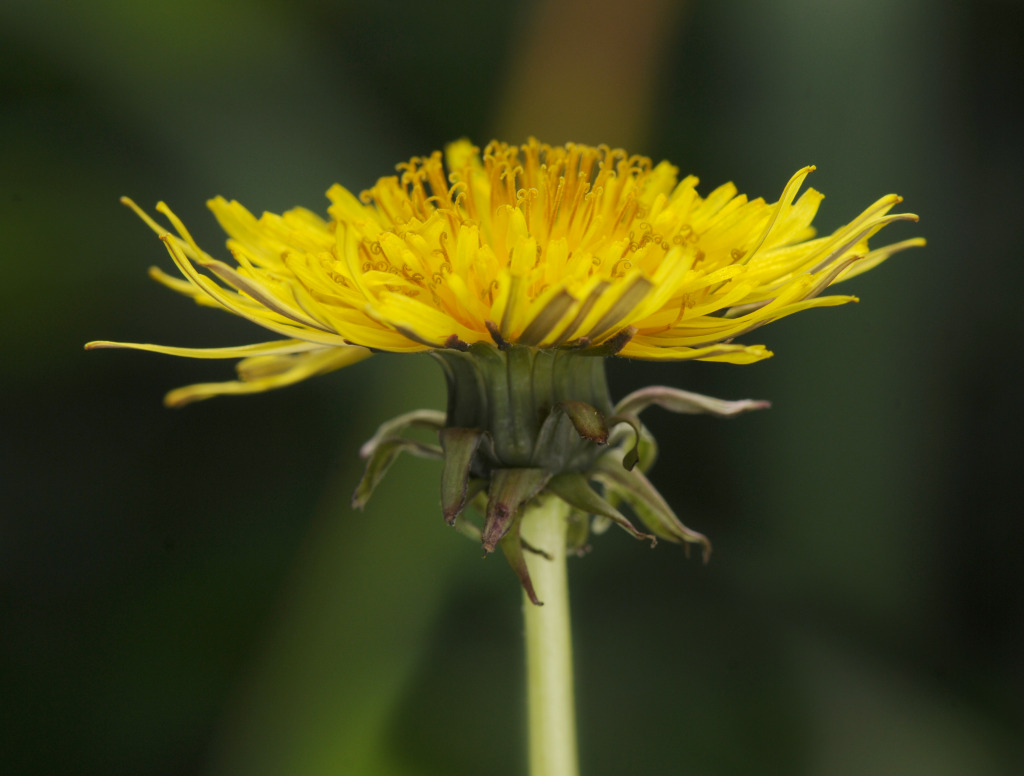Taraxacum sp. group 1
Scarlett, N.H. (1999). Taraxacum. In: Walsh, N.G.; Entwisle, T.J., Flora of Victoria Vol. 4, Cornaceae to Asteraceae, pp. 688–694. Inkata Press, Melbourne.
Leaves lanceolate to lyrate, often to over 30 cm long and relatively broad, initially arachnoid-hairy, becoming glabrous; blade shallowly to deeply lobed; proximal lobe margins often lobulate to laciniate; petioles and midribs green or uniformly purple. Capitula 2–4 cm diam.; outermost involucral bracts ovate-lanceolate, lanceolate or linear-lanceolate, erecto-patent to abruptly reflexed, with apical callus, uniformly or variously oriented in a single capitulum, variously coloured; white borders present. Marginal ligules exceeding involucre, sometimes scarcely so; pollen present or absent; stigmas lime-green to grey. Cypselas dark olive-brown, olive-grey, straw-coloured or black, markedly spinulose above, verrucate to smooth below; cone cylindrical, (0.5–) 1–1.5 mm long; beak longer than body of achene; pappus 4.5–8 mm long. Flowers Sept.–Apr.
VVP, GipP. Native to Eurasia. Locally common in relatively dry areas of Victoria, often on heavy soils.
Taraxacum khatoonae Abedin, a member of T. species group 1 sensu Scarlett (2015), is common and widespread on and west of the Murray River in South Australia, but has not been collected in Victoria despite its reasonably close proximity. It is distinguished by having a cypsela cone (0.8–) 1–1.5 mm long, which is longer than Victorian plants that have cones only up to 1 mm long. Other Victorian members of 'Species group 1' probably represent a number of named taxa in which 'species' are very narrowly defined and produce seeds without pollination. They are treated by Scarlett (2015) as 'Other Taraxacum Group 1 species', separate from T. khatoonae.
 Spinning
SpinningScarlett, N.H. (2015). Taraxacum. In: Australian Biological Resources Study, Flora of Australia vol. 37, Asteraceae I, pp. –. CSIRO Publishing.
